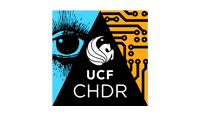Article Title
Abstract
The accelerations experienced by riders of Zip Line attractions is an underexplored area of public safety assurance. These amusement devices require complex processes to collect and analyze acceleration data. Highly versatile and effective rider-worn and ride-carried devices are necessary to collect acceleration and velocity data without affecting the integrity of the ride. This paper introduces the use of a sensor device for collecting Zip Line acceleration data in the form of a Trailing Trolley. This architecture extends the work of Sicat et. al.’s which proposed the use of a Sensor Vest and Headwear to collect linear and rotational accelerations of a Zip Line rider. We investigate the logistics of combining the two sensor platforms and formulate a procedure to post-process and analyze the data. Techniques to extract, filter, and process the accelerations recorded is discussed and the potential for the synthesis of positioning linear and rotational data is described. Additional testing of data collection and analysis is necessary to prove the viability of these techniques and apparatuses as potential parts of a standardized test method for measuring rider experienced g-forces on Zip Lines.
Creative Commons License

This work is licensed under a Creative Commons Attribution-NonCommercial-No Derivative Works 4.0 International License.
Recommended Citation
Quizona, Kai David; Sicat, Shelly; Holman, Nicholas; Glozer, Madison; Black, Alan; Ferworn, Alex; and Woodcock, Kathryn
(2018)
"Physical and digital architecture for collection and analysis of imparted accelerations on Zip Line attractions,"
Journal of Themed Experience and Attractions Studies: Vol. 1:
Iss.
1, Article 7.
Available at:
https://stars.library.ucf.edu/jteas/vol1/iss1/7
Included in
Environmental Design Commons, Interactive Arts Commons, Theatre and Performance Studies Commons




